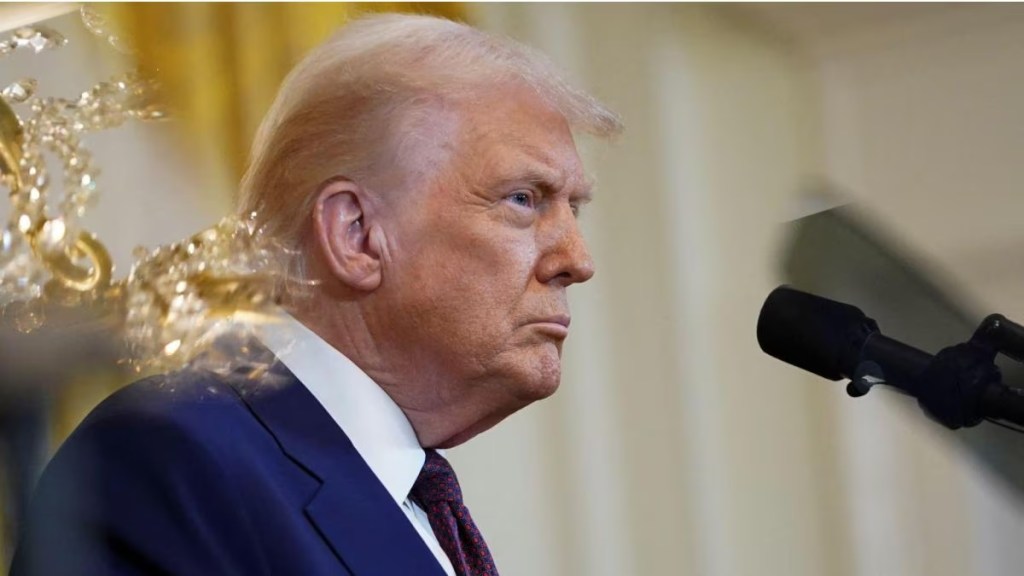Donald Trump’s daring tariff assault on the world has turned the clock back for the global trade order by several decades. The paradox is that the avowedly disruptive move has come from a country that has long been the steward of “free markets”, and at a time when the global economy is facing a prolonged crisis of confidence. For the record, a sharp widening of America’s trade gap with the rest of the world (an annual $1.2 trillion according to the latest US data) lies at the root of Trump’s move. The US president laments how his country’s industrial base has been “devastated” over the last half century owing to “unfair trade practices” by several nations. But the additional tariffs haven’t been limited to the countries with which the US runs trade deficits. Trump has shown callous disregard for the Uruguay Round grand bargain that accorded developing countries the right to keep relatively higher “bound tariffs” (reasonable room for tariff hikes, if need be). Countries with low per capita incomes aren’t given any reprieve, or the benefit of positive discrimination. Analysts reckon Trump’s protectionist policy could do as much damage to the US economy, as to the rest of the world. Many see significant chances of a US recession over the next year or so, and a possible stagflationary shock to the rich world. Trump might be overestimating the capacity of the US economy to be self-contained, and underrating the ability of many countries to mount an offensive. His strategy might well unravel in a matter of a few months, if not earlier.
On the face of it, the US president, known for his ruthlessly transactional approach, has shown a bit of amenability to criticism against his big gamble. Trump’s “discounted” country-wide reciprocal tariffs are restricted to “half the tariffs charged” by each country. But the tariff levels seem to have been computed by an obscure formula linked to trade deficits, rather than real duties. For instance, India’s simple average tariff is around 17% now, with a trade-weighted rate of 12%, a far cry from the 52% estimated by the US. Trump has made it clear his tariff fury could be promptly contained, if countries respond with steps to increase market access for US firms. But the world doesn’t seem to pay heed to his menacing tone. The European Union is bound to retaliate. China, which now faces US tariffs in the prohibitive range of 54-79%, has vowed to “resolutely take counter-measures”. A tariff war is real, and likely to trigger significant re-organisation of the world trade order.
As for India, the reciprocal tariff to apply on exports to the US would be 27%. The new levy will apply along with the extant average US tariff of 3.3%. Product-wise duties on Indian exports to the US could be higher in a number of cases. India was called out by Trump as “tariff king” multiple times. Yet, as it turns out, Wednesday’s announcement offers a solace for the country with the extra imposts on it being lower than those on its key Asian competitors. The country could hope to make gradual gains from supply chain changes the US move could trigger. Also, much to New Delhi’s relief, pharmaceutical formulations and semiconductors are exempt from the reciprocal levies.
The right strategy for India now is to lie low and use the proposed bilateral trade agreement to bolster two-way trade with the US in a more beneficial fashion. This is exactly what both the government and industry seem to do, but any sustained and substantive gains will be contingent on domestic reforms to boost economic productivity. In the short term, India might lose out in certain export segments like seafood, and gems and jewellery, which have high labour content, but the relative advantages cropping up in the equally labour-intensive textile sector and emerging areas like electronics, could offset the losses. The US frets over India’s “non-tariff barriers” to trade and its assorted other economic regulations that hamper US companies’ business interests. India must tread with caution on this front. Legitimate concerns of domestic constituencies must not be overlooked, while rules that are patently inimical to smooth conduct of businesses must be relaxed.

